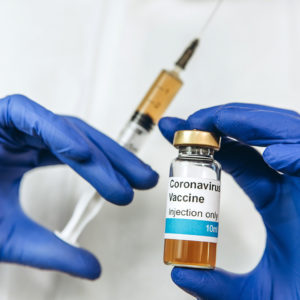The Federal Trade Commission just announced plans to “take an aggressive approach to tackling anticompetitive pharmaceutical mergers.” A newly formed FTC working group is seeking public comment on the issue by June 25.
Kelly Slaughter, the acting head of the agency, recently blamed the “high volume of pharmaceutical mergers in recent years … [for] skyrocketing drug prices.”
Not only are her actions without merit, but they also imperil the ecosystem that drives drug development and produced the COVID-19 vaccine. Mergers and buyouts are really just another form of partnership, which — just like licensing, joint ventures, or other collaborative arrangements — facilitate the scientific innovation that delivers life-saving drugs to patients. Rising levels of merger and acquisition (M&A) indicate America’s innovation engine is firing on all cylinders.
Look no farther than the collaboration between American pharmaceutical giant Pfizer and the much smaller German biotech BioNTech. This partnership resulted in the first COVID-19 vaccine authorized for use anywhere in the world.
That joint project began back in 2018. By that point, the husband-and-wife team behind BioNTech had been working for 25 years on a technology for treating infectious diseases using messenger RNA, or mRNA. Recognizing the potential of that work, Pfizer agreed to partner with BioNTech to develop the technology into a flu vaccine.
That influenza inoculation was on track to enter human trials in 2020. But the two firms pivoted once the pandemic emerged, focusing their efforts instead on a COVID-19 shot. The rest is history.
The Pfizer-BioNTech project isn’t unique in this regard. Another pioneer in COVID-19 vaccines, the Massachusetts-based start-up Moderna, also began life as a small venture launched by a group of scientists. It developed its own mRNA technology in collaboration with major pharmaceutical firms like AstraZeneca and Merck.
The reasons for such joint ventures, and mergers and acquisitions more broadly, are covered in middle school economics: specialization of labor leads to maximum efficiency. Small, privately-backed operations like BioNTech and Moderna excel at early-stage, usually highly-specialized research and development. Their investors have a high tolerance for risk. And they pursue lines of research that may never have occurred to the scientists at larger companies. In this way, they serve as incubators for revolutionary medical advances.
But smaller biotechs often lack the considerable resources and manufacturing know-how to turn their ideas into real-world treatments, cures, and vaccines.Conducting clinical trials generally takes years and can cost hundreds of millions of dollars. Navigating the byzantine regulatory approval process — on multiple continents, not just in one country — requires boardrooms of lawyers. And actually, mass manufacturing and distributing a drug requires a level of logistical and engineering expertise that is far beyond the average start-up’s capabilities.
Larger pharmaceutical firms have the resources needed to bring experimental drugs from the lab to the pharmacy shelf. And partnerships, mergers, and acquisitions are the mechanism by which large firms collaborate with smaller biotechs. This deal-making essentially enables a division of labor, allowing firms of all sizes to concentrate on their strengths while shoring up their weaknesses.
Under this system, patients benefit most. We want brilliant minds at thousands of small, unheard-of biotechs chasing tomorrow’s cures. But they can only do so if larger manufacturers help ensure their ideas are safe, effective, and actually reach patients.
The prospect of a buy-out also gives venture capitalists the confidence to invest in early-stage research start-ups. These investors fund lab and pre-clinical testing, knowing that if an experimental drug shows promise, the start-up may be acquired at a return sufficient to allow the venture capitalist to redeploy those funds into other promising biotech companies, and remain responsible stewards of university endowments and public pensions. If start-ups couldn’t be acquired by larger firms, they’d have far less chance of raising funds from investors for cutting-edge research.
Biotech investor Johannes Fruehauf described this process as a relay race. The runners are small biotech firms, who transform academic discovery into promising cures, and name-brand companies, who safeguard and commercialize these cures. M&A is the baton pass. Attacking it demonstrates a misunderstanding of the drug development ecosystem, a dangerous position for a government regulator.
Partnerships and M&A deals accelerate medical progress, as the response to COVID-19 has made abundantly clear. Blocking this collaboration between big and small firms, and thus making America less innovative, would be the true “anticompetitive” behavior.

